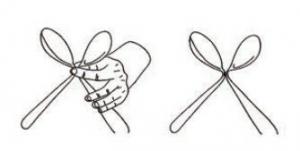4 problem solving techniques (and how to use them)
On many occasions a complex problem is presented in front of us and we do not know how to deal with it. Suppose, for example, that in the exam period, two evaluations coincide and we do not know how to start studying. Or let's say that when solving a math problem, we get stuck and don't know how to take the next step.
Tackling complex problems can be challenging, but it doesn't have to be overly complicated. The key is to get into the right mindset and use a methodology to approach the situation at hand.
Decisions in the face of complex circumstances or strategies when facing difficult problems can require the application of problem solving techniques (problem solving) to facilitate the path to continue; through a number of known approaches or schemes.
In this article we explore the different problem-solving strategies and the models that can be applied to face these and come up with a solution.
- Related article: "The 13 types of learning: what are they?"
What are problem solving techniques?
Problem solving strategies or techniques are models that are based on previous experience and provide a focus when facing problems or analyzing possible solutions.
There are certain known troubleshooting methods that come into play when we are faced with a problem with no apparent solution to us. These methods are really useful for those times when it seems like we don't have a viable way out.
To avoid wasting time when solving a problem, strategic brief therapy is used, which uses problem solving techniques to quickly analyze and solve problems. This approach makes it possible not to get bogged down in problems and give them millions of fruitless turns.
- You may be interested in: "Cognitive Psychology: Definition, Theories, and Leading Authors"
Examples of problem solving techniques (and how to apply them)
There are many situations in which individuals or groups get stuck. Troubleshooting techniques provide a simple and easy way to unblock the situation. There are four main techniques that people can use, as we explain below.
1. stage technique
Imagining the end goal or scenario is essential to effective problem solving. After identifying a problem, we must ask ourselves what the scenario would be like after solving it.. We can also ask how the situation changes after improvements are made to the desired outcome. By imagining the final state, we can better understand the next step to solve the identified problem.
Working in a version of reality that does not exist in the present or in the past allows people to discover the ideal characteristics of reality. Doing this can allow us to see things that would not be possible if we just work with the current reality.
This technique, used by great inventors, It is known as “the fantasy of the perfect machine”. Leonardo da Vinci is a well-known example, cited many times; he faced the problem of how to fly, devising multiple designs for flying machines, which no one had ever been able to conceive or imagine before.

Imagination can be unleashed through the act of thinking. Everyone has the ability to imagine a better future than their current situation. The only problem is that most people don't know how to use this ability. The scenario technique helps to imagine what is possible, to then implement it: the first step is brainstorming; then only the aspects that are achievable are selected.
Although it may seem like just a fantasy, the scenario technique beyond imagining the possible solution can indicate a procedure. This technique makes use of self-fulfilling prophecies in a certain way, allowing them to be directed towards concrete results instead of letting them harm us. We all tend to build these types of fantasies, but the trick is knowing how to direct them in a functional direction.
It is also useful consider what the world would be like if a problem were solved, to get an idea of collateral damage. This is due to the well-known butterfly effect; every time a change is made - even minimal - in a complex system, side effects are produced. It is important to explore possible scenarios before making significant changes to avoid these unwanted effects.
- Related article: "Psychology of work and organizations: a profession with a future"
2. Technique of how to get worse
To apply the technique of how to get worse, it is important to not only look at failed solutions that have already been implemented, but also at possible solutions that could fail in the future. This allows a deeper understanding of the problem and why proposed solutions fail.
To face the problem we must ask ourselves how we can make the situation worse instead of better. It is crucial that we try to list all possible methods that could make the situation worse rather than better. Each of these methods should be described in such a way that it is clearly understood how to implement the strategies that would cause our project to fail rather than succeed.
By considering all the possible things that could go wrong, you create a negative sentiment toward those types of actions. Consequently, we avoid doing anything related to those possible scenarios. If these solutions produce results contrary to our intentions, based on their avoidance, we must find an alternative method to deal with the problem. By taking a new perspective on the problem, a viable solution can be created that avoids counterproductive activities and block any action that produces effects contrary to our intentions.
When looking for solutions, most people will simply repeat the usual mental paths to find possible answers. By forcing the mind to examine failed solutions, we can discover new alternative solutions thanks to the contrast that is produced. By forcing our reason to find ways to fail, we encourage our rationality to focus on new ways of thinking. This allows creative processes to move forward unimpeded. Also, by getting out of the voluntary effort trap, we can find spontaneous solutions.
- You may be interested in: "Strategic thinking: what it is, characteristics and how to enhance it"
3. climber technique
The technique takes its name from the practice of expert mountain guides. When planning a route, these start at the top of the mountain and trace the intended path backwards until you reach the start or bottom. This method is considered an improvement for drawing routes without deviating from the target; it also allows them to choose the easiest path to the top. Furthermore, researchers have shown that this technique avoids paths or solutions that are significantly more difficult than expected.
Before attempting to solve a difficult problem, it is helpful to brainstorm possible solutions starting with the end goal. And then go considering the previous steps until reaching the initial state. Once each step is imagined, we will have an efficient as well as effective strategy to address the problem. To complete a goal, it helps to break it down into smaller goals.
4. Writer's Block Technique
This technique takes its name from the famous block suffered by novelists who are unable to write despite trying hard. The writer who suffers from this type of block affirms that he has no more creativity and that his words will not reach him. Despite the fact that he sits in front of the typewriter and has an agreement with his publisher to deliver a novel, he is only able to write a few sentences at a time.
The problem is that the author who may suffer from this type of block has always implemented a method that required very little effort for himself. Before writing, he first developed the plot of the story and then arranged the chapters in order. These different episodes, when written, resulted in the end of the story, this was not decided in advance. However, this way of writing stops working and the novelist's biggest concern is that he has no idea how to proceed with his work.
Because the author or author wants to leave her imagination free for the development of the story and go where it takes him; he prefers not to decide on an ending before writing the novel and that it be a consequence of the story itself. This same thing happens when we get stuck in front of a problem and can't find the way out; As we do not have an identified solution, we are unable to advance in the different steps towards its resolution and we are giving blind strokes. Instead of walking without knowing where we are going, the writer's blocked technique suggests first deciding where we want to go: the end or the resolution of the problem.
Then, identify the different stages or chapters that are needed to achieve it. Finally, subdivide the stages into smaller ones, until you get a series of microsteps that are easy to execute. In this way, we are advancing little by little towards the final result.
In conclusion...
In conclusion, when we are faced with complex situations, people tend to get stuck and take thousands of fruitless turns around a problem. The different problem solving techniques allow us to adopt another perspective to clearly see the complete image and get out of the impasse in which we find ourselves.

